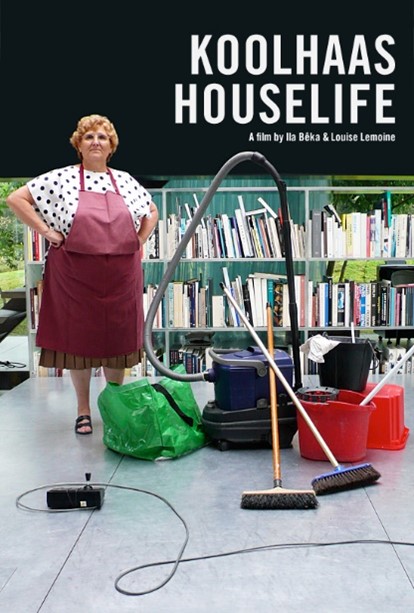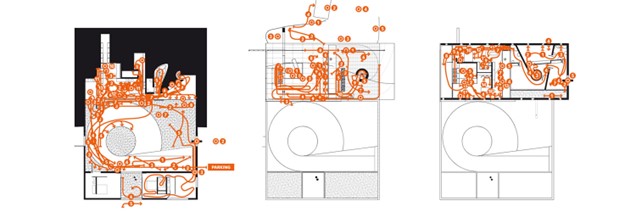Koolhaas Houselife
Koolhaas Houselife is an architectural documentary that centers on Rem Koolhaas’ prominent work, Maison à Bordeaux, a private residence in France. Created by Ila Bêka & Louise Lemoine as part of a series called “Living Architecture,” this 58-minute film shows architecture through the lens of everyday moments.

Organized into short chapters, the documentary portrays the engagement of various individuals with the building. As the documentary progresses, it delves into chapters exploring the “Elements of Architecture,” encompassing components such as stairs, windows, and the elevator. These elements are examined within the context of the house and its housekeeper, Guadalupe Acedo, as she navigates through the space, cleaning and organizing as she goes.
This approach provides a fascinating angle, examining architecture not through the architect’s or owner’s viewpoint, but from the housekeeper’s perspective. Guadalupe contends with the intricacies of the spiral stairs as she attends to hard-to-reach corners. She voices concerns about window leaks while rationalizing their forthcoming replacement. She’s curious about the home’s structural support, given no visible columns in the open plan, yet is apprehensive that the house might collapse someday, despite her fondness for its current state. Her candid observations blend humor and authenticity, perhaps even more genuine than Koolhaas’ poetic sketches and design theories.
This approach provides a fascinating angle, examining architecture not through the architect’s or owner’s viewpoint, but from the housekeeper’s perspective. Guadalupe contends with the intricacies of the spiral stairs as she attends to hard-to-reach corners. She voices concerns about window leaks while rationalizing their forthcoming replacement. She’s curious about the home’s structural support, given no visible columns in the open plan, yet is apprehensive that the house might collapse someday, despite her fondness for its current state. Her candid observations blend humor and authenticity, perhaps even more genuine than Koolhaas’ poetic sketches and design theories.
“The movement of the elevator continuously changes the architecture of the house,” Koolhaus says. “A machine is its heart.” Labeling the elevator as the house’s core, Koolhaas conceived a 3-by-3.5-meter elevator platform that functions as a mobile library and office. Positioned at the center of the house, the elevator connects its three levels.
Amusingly, Guadalupe expresses concern about the books sticking out from the library shelf, which could potentially lead to the elevator getting stuck again while she’s on it. The diagram below depicts Guadalupe’s path juxtaposed on Koolhaas’ floor plans as she moves through the house as she cleans. The documentary culminates at dusk, capturing the moment when the homeowner draws the curtains and orchestrates the shutdown of the machine at its center.

Considering Rem Koolhaas’ inclination toward contrarianism in his professional practice, this documentary subtly comments on the realism of architecture and, more crucially, architectural theory. The documentary abstains from elucidating the design intent or the theory underpinning the architecture, instead focusing on how the structure is utilized. After all, isn’t that the fundamental purpose of buildings? Or is it?